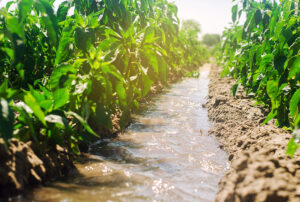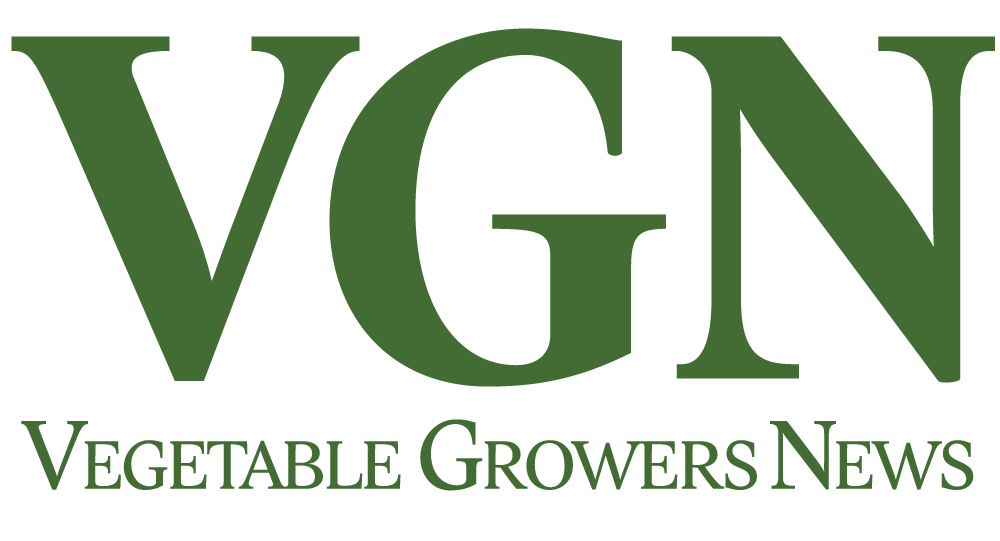New water, traceability rules on the horizon
The new FSMA (Food Safety Modernization Act) Produce Safety Rule preharvest water provisions and traceability rule compliance dates are coming soon, and produce growers and processors are taking steps to prepare their operations.
“Compliance dates for the FSMA Produce Safety Rule preharvest provisions and for the Traceability Rule are coming in 2025 and 2026. That is not that far off,” said Chip Simmons, North Carolina State University agriculture specialist in fresh produce, food safety.
For fresh produce growers, the ability to adapt to these and other new rules is crucial.
“We all have to be able to adapt because the work rules continually change,” said Don Stoeckel, Produce Safety Alliance Extension educator in Cornell University’s Department of Food Science.

Water concerns
The new water rule is a move away from the quantitative criteria of testing water for E. coli and a move towards a more qualitative assessment.
“Until now, you would take water samples from the source, test them, and if the results met a threshold value, you were good to use the water,” Simmons said.
The first compliance date for the preharvest water provisions is April 7, 2025.
“Instead of testing for generic E. coli to make definitive conclusions, the new rule has you looking around the farm for risks,” Stoeckel said.
An operation is exempt from the new provisions if the water source is groundwater that meets the Produce Safety Rule testing and quality criteria for postharvest water, which is no detectable generic E. coli in 100 milliliters of water.
An operation is also exempt if the water source is a public water system or supply that meets requirements established in the rule or if water is treated to the standards outlined in the rule.
For these exemptions, “water, as applied, must be the same quality as in the source,” Stoeckel said.
For example, if safe water is moved to fields through open ditches, there’s a potential for contamination and the exemptions would not apply.
“Water has over and over again been shown as a way to move microbial contaminants to and around on farms,” Simmons said.
Besides considering the water source and its quality, the timing of when and how the water is applied to the crop must be part of the risk assessment.
An application three months before harvest, if there is in-field die-off, has lower risk than an application three days before harvest. A drip line application is lower risk than an overhead application when the drip line is unlikely to have water contact the fruit.
“Look at it as a sliding scale of risk,” Simmons said. “Start at the source and follow the trail all the way to the crop, taking into account how and when the water’s applied, and accounting for risks across the entire water system. It’s risk-based and encompasses the whole system.”

Stoeckel said the FDA has identified several low-risk ways of using water, such as using the cleanest water sources or avoiding contact with the harvested portion of the crop.
“If growers can incorporate these into their operations, the growers can meet produce safety goals without doing some of the assessments that would be required otherwise,” he said.
Many types of fresh produce are exempt from the Produce Safety Rule requirements because they’re rarely consumed raw. Examples include potatoes, sweet corn, asparagus, okra and red beets.
Assessing risk
Water risks that are under the farm’s control could include the application of biological soil amendments of animal origin (BSAAOs) to a growing field. Risks that are beyond the farm’s control could be a cattle feedlot a mile upstream or wildlife in a nearby conservation area.
“These all could be risks to a surface water source,” Simmons said. “The Produce Safety Rule’s preharvest water provisions require growers to make their best assessment of the risks that are both within their control and those that may be beyond their control.”
If growers are not exempt from the preharvest agricultural water rule, then they must conduct an Agricultural Water Assessment (AgWA).
The AgWA is a written assessment that identifies risk factors, such as the presence of animal or human fecal matter, and determines whether corrective or mitigation measures are needed to reduce the potential for contamination of covered crops.
“The AgWA looks for ways to mitigate identified risks,” Stoeckel said. “Where is the fecal matter on the landscape and how could it get on the crop? If the risk profile is extensive, what can you do about it?”
The preharvest water section of the Produce Safety Alliance Grower Training has been revised to include the new water rule. It’s a good starting point for those who haven’t taken the training or want a refresher. The FDA also has fact sheets that are good sources of information.
Enhanced traceability
Traceability applies to a broad range of foods other than the whole fresh produce items that are on the Food Traceability List, like pre-packaged salads and certain types of fish.
Traceability will be dependent on farms establishing clean breaks based on their cleaning and sanitizing programs.
“Traceability will rely on solid records for clean breaks between lots and all of the records that go along with it,” Simmons said.
Processors or packers who have a problem will rely on those records to understand where the problem occurred. Good records could limit a potential recall to just a day’s production and not a year’s worth.
Finding a way to identify lots is going to be an important step.
“How do growers partition their production into lots and how do they identify those unique lots?” Stoeckel said. “How do they organize their production into segments and how do they identify them? Do they use stickers or mechanical label guns?”
Simmons said traceability will bring expanded responsibility for growers, but a contamination event with a loss of consumer confidence could destroy an entire commodity market.
“Traceability should help protect the crop that leaves an individual farm,” Simmons said. “This will help protect the business and ultimately help protect the entire market.”










